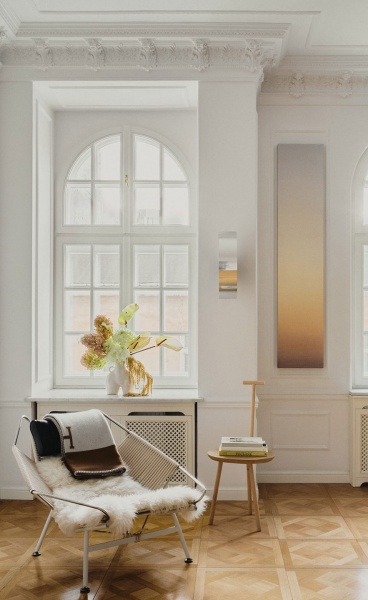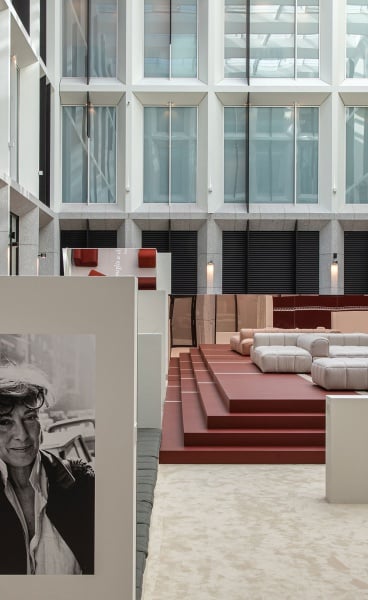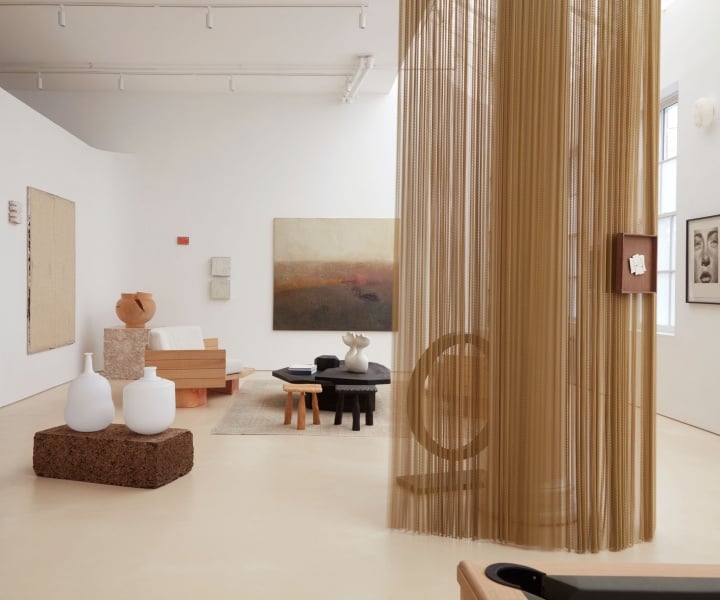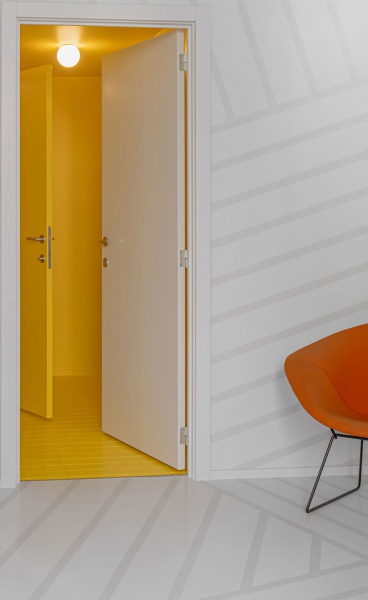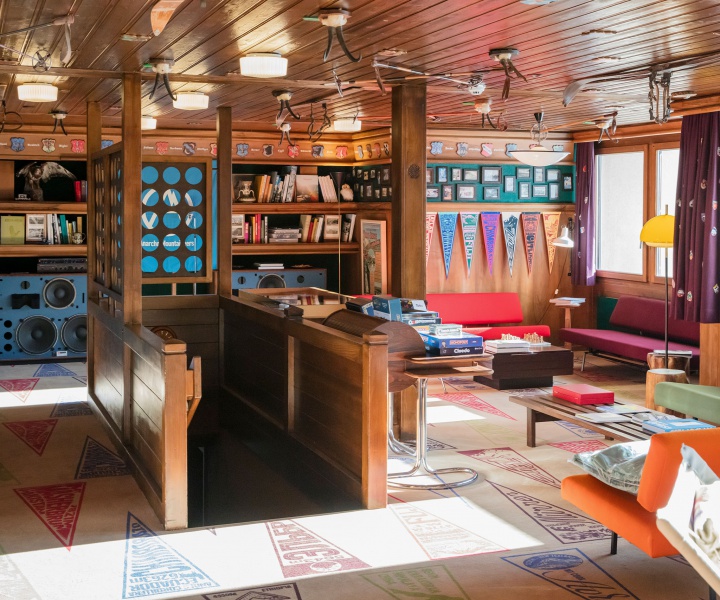Le Corbusier aboard the Lutéria, between 10 and 22 December 1929, upon his return from South Africa. It is during his trip that he fine-tuned the manuscript for Précisions. Le Corbusier aboard the Lutéria, between 10 and 22 December 1929, upon his return from South Africa. It is during his trip that he fine-tuned the manuscript for Précisions.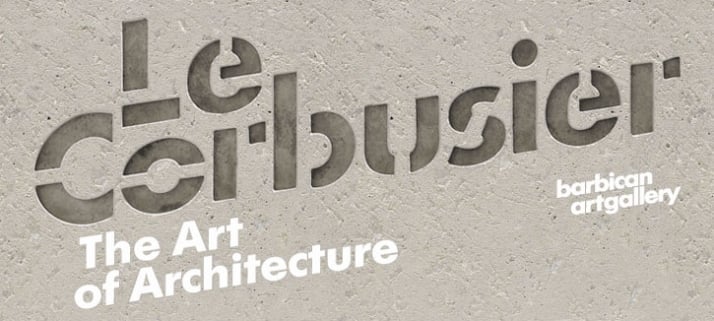
© AFondation Le Corbusier, Paris
The image was found in page 135 of "The Rhetoric of Modernism: Le Corbusier as a Lecturer" book by Tim Benton for Birkhäuser publications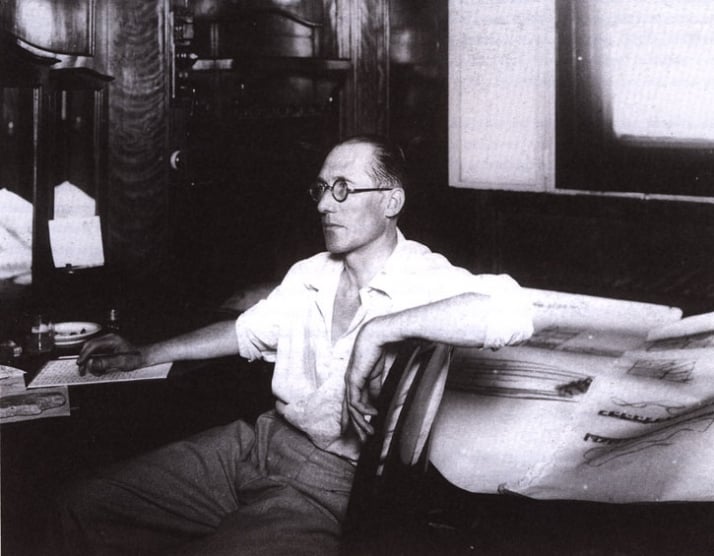
© AFondation Le Corbusier, Paris
The image was found in page 135 of "The Rhetoric of Modernism: Le Corbusier as a Lecturer" book by Tim Benton for Birkhäuser publications
: Le Corbusier, Phillips Pavilion at the World’s Fair in Brussels, 1958 ©FLC, Paris and DACS, London 2009left: Le Corbusier, Unité d’habitation de Marseille, roof view, 1946-52 ©FLC, Paris and DACS, London 2009 right Le Corbusier in front of a drawing explaining his Unité d'Habitation de grandeur conforme, probably in the drawing office at the Rue de Sèvres

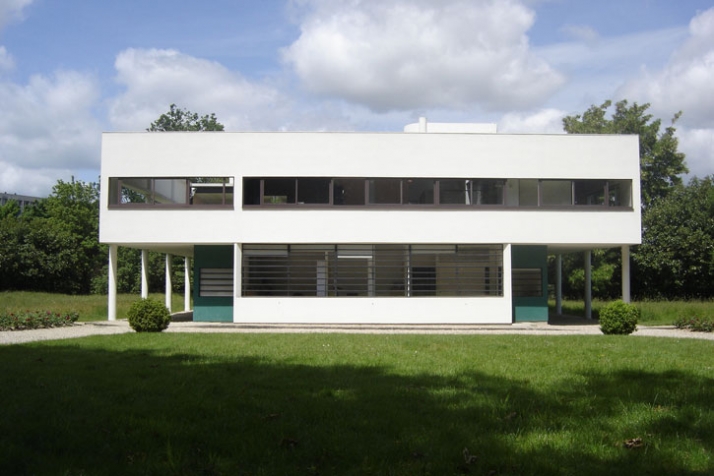
© AFondation Le Corbusier, Paris
The image was found in page 92 of "The Rhetoric of Modernism: Le Corbusier as a Lecturer" book by Tim Benton for Birkhäuser publications
19 Feb - 24 May 2009Barbican Centre Silk StreetLondon EC2Y 8DS
Le Corbusier — The Art of Architecture at Barbican Art Gallery is the first major survey in London of the internationally renowned architect in more than 20 years. This timely reassessment charts how the work of Le Corbusier — a pseudonym of Charles-Édouard Jeanneret-Gris — changed dramatically throughout his career. Spanning a period of 60 years the exhibition includes early works inspired by his native Switzerland, the iconic white cubic buildings of the 1920s such as the famous Villa Savoye (1928-31) and culminating in the late works of the 1950s and 60s of which the Chapel of Ronchamp (1950-55) and the buildings for the Indian city of Chandigarh (1952-64) are key examples.
The exhibition focuses on Le Corbusier’s unique multi-disciplinary approach, and brings together a wealth of his paintings, films, sculpture and books alongside vintage photographs, original architectural models and interior settings. It also features important works by his collaborators and artistic contemporaries such as furniture designers Charlotte Perriand and Jean Prouvé, and artists Fernand Léger and Amédée Ozenfant. Highlights include a monumental mural painting by Le Corbusier from his office in Paris Femme et coquillage IV (1948); a complete original kitchen by Le Corbusier and Charlotte Perriand from his famous Unité d’habitation, Marseille (1947-50); and a reconstruction of his utopian masterplan for Paris (1925).
Presented in collaboration with the RIBA Trust, the exhibition includes key sources of inspiration for Le Corbusier, among them Fernand Léger’s The Baluster (1925), on loan from The Museum of Modern Art in New York. Originally exhibited in the Pavillon de l’Esprit Nouveau, which Le Corbusier designed for the 1925 International Exposition of Decorative Arts in Paris, this is a very rare opportunity for this important work to be seen in London. The exhibition also includes paintings and drawings by Juan Gris, Piet Mondrian and Pablo Picasso among others. The Barbican Estate and Centre, arguably the most important expression of Corbusian ideas in the UK, provides a fascinating backdrop for this retrospective of Le Corbusier’s work. Seen in architectural forms and concepts from the famous high-walkways and pillars to the rough concrete and rooftop and vertical gardens, the work of Le Corbusier had a significant influence on the Barbican’s architects, Chamberlin, Powell and Bon.
Home to approximately 4000 residents living in more than 2000 flats, the backdrop of the Barbican Estate resonates with another addition to the exhibition, photographs of Le Corbusier’s interiors. Providing an intimate view of his domestic spaces, they illustrate how families through to wealthy clients inhabited his residences. The Barbican, Europe’s leading arts centre, celebrates the Le Corbusier exhibition and his dynamic cross-arts approach with its Le Corbusier at the Barbican programme. Featuring concerts, a film season, talks and events, highlights include: a day (7 March 2009) presented by the BBC Symphony Orchestra dedicated to the composer Iannis Xenakis who worked as an architect in Le Corbusier’s studio; sound workshops by electronic artists; tours of Barbican flats, artist’s films and a high-profile debate in the Barbican Hall. The talks programme, presented
in partnership with the RIBA Trust, includes Le Corbusier experts Charles Jencks, Tim Benton and Jean Louis Cohen, and the ‘Architects of the 21st Century’ events series featuring rising stars from the field of architecture and design.
Kate Bush, Head of Barbican Art Galleries, said:
“I’m delighted to be able to present this major survey of Le Corbusier’s work at the Barbican Art Gallery. Not only is it an exceptional opportunity for visitors to experience the many facets of an incredible polymath, but it has a fantastic resonance with the Barbican itself. Le Corbusier was the guiding spirit for the Centre's architects, inspired by his utopian vision as well as later buildings such as Maisons Jaoul, and Unité d'Habitation. “As Europe's leading multi-arts centre, the Barbican is uniquely able to represent
Le Corbusier's range across many forms of expression, from art and design to music and film. We've devised a dynamic programme of music and events which will thrill audiences, whilst fully exploring Le Corbusier's legacy in the new century."Le Corbusier (1887-1965), widely acclaimed as the most influential architect of the 20th century, was also a celebrated thinker, writer and artist. His architecture and radical ideas for reinventing modern living, from private villas to large-scale social housing to utopian urban plans, still resonate today. The exhibition charts how Le Corbusier’s work changed dramatically over the years from the regional vernacular of his early houses in Switzerland, to his iconic Purist villas and interiors of the 1920s, to the dynamic synthesis achieved between his art and architecture as exemplified by his chapel at Ronchamp (1950-55), and his civic buildings in Chandigarh, India (1952-64). Important works by his collaborators, such as Fernand Léger, Amédée Ozenfant Charlotte Perriand and Jean Prouvé are also featured.
Armchair LC3 designed by Le Corbusier, Pierre Jeanneret, Charlotte Perriand in 1929 for Cassina
Le Corbusier delivering his lecture "Les relations entre l'architecture et la peinture" at Zurich on 12 January 1938
© photograph: Gottfried Schuh, Arthur Rüegg Archive, Zurich
book cover of "The Rhetoric of Modernism: Le Corbusier as a Lecturer" by Tim Benton for Birkhäuser publications
"The Rhetoric of Modernism: Le Corbusier as a Lecturer" book by Tim Benton for Birkhäuser publications
Beginning in the "heroic" period of the 1920s, Le Corbusier presented his work to the world in his lectures: in Paris and Rome, Geneva and Zurich, Barcelona and Brussels, Prague and Moscow, Buenos Aires and Rio de Janeiro, as well as at Columbia University in New York.
In this volume, the numerous excerpts, preliminary notes, accompanying drawings, and photographs that Le Corbusier produced in connection with his lectures are presented and contextualized by one of the leading experts on the great architect. In them we see modernism at work. Always a great rhetorician and a master at staging his own persona, Le Corbusier takes the arguments and strategies, seminal ideas and most convincing highlights and fuses them into an architectural conception that every advanced architectural position and practice must still come to terms with today.
After presenting the lectures in detail in a series of thematic chapters, the final third of the book reproduces five pivotal lectures from the 1920s and 1950s.
book credits: 2009, 247 p. 155 illus., 90 in color., Hardcover / ISBN: 978-3-7643-8944-4




